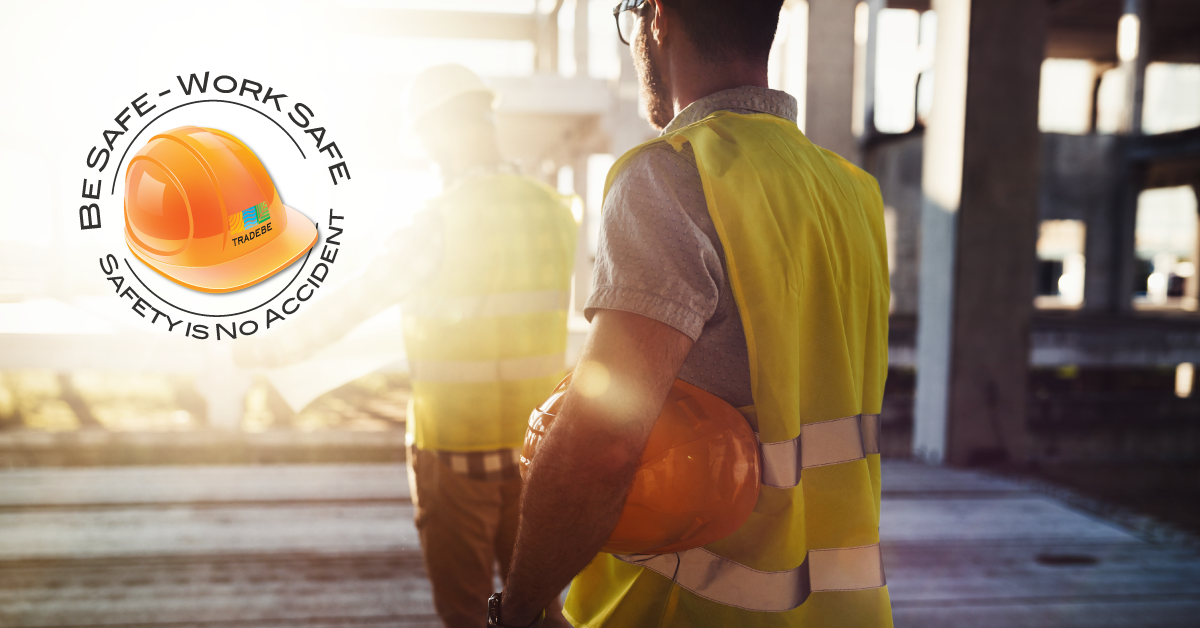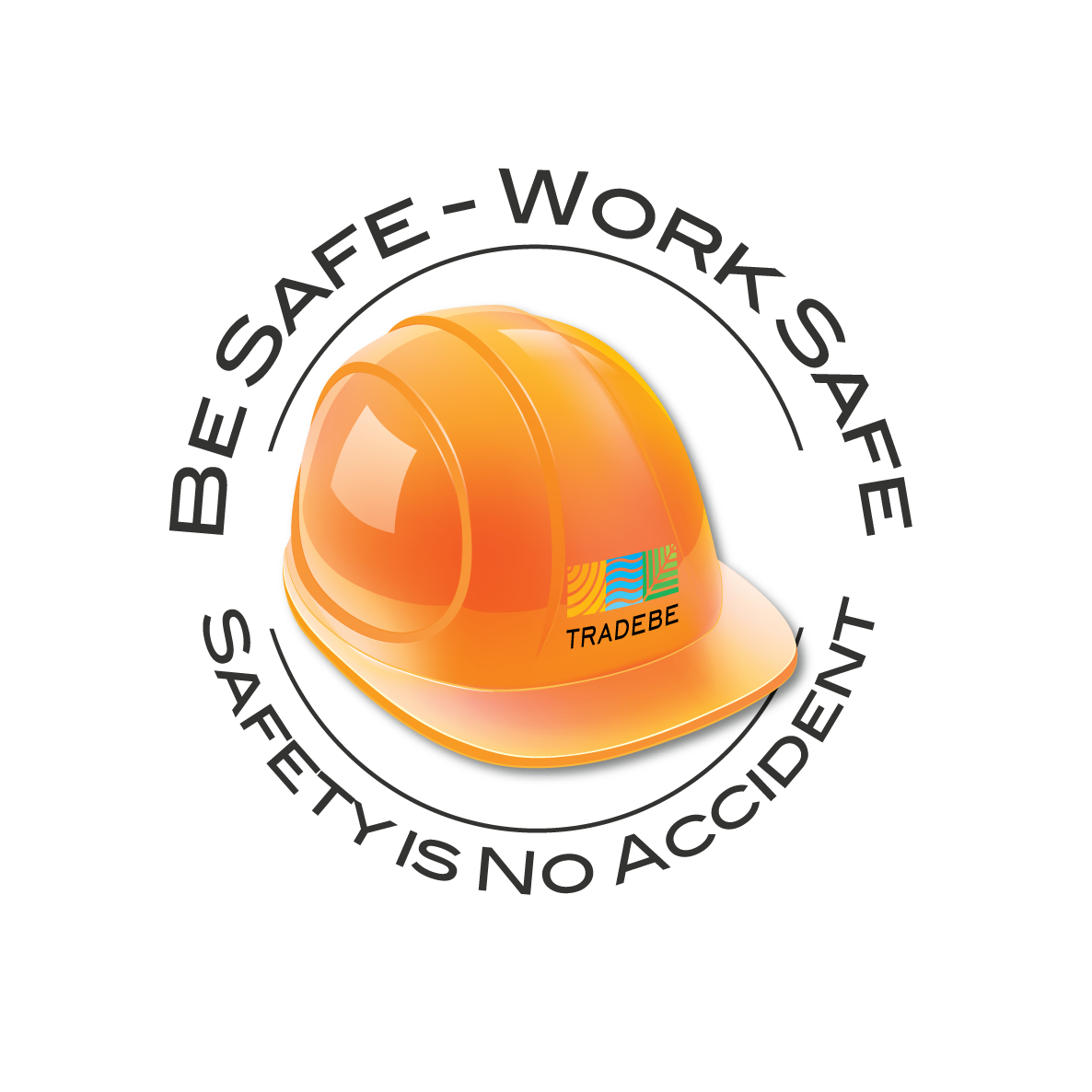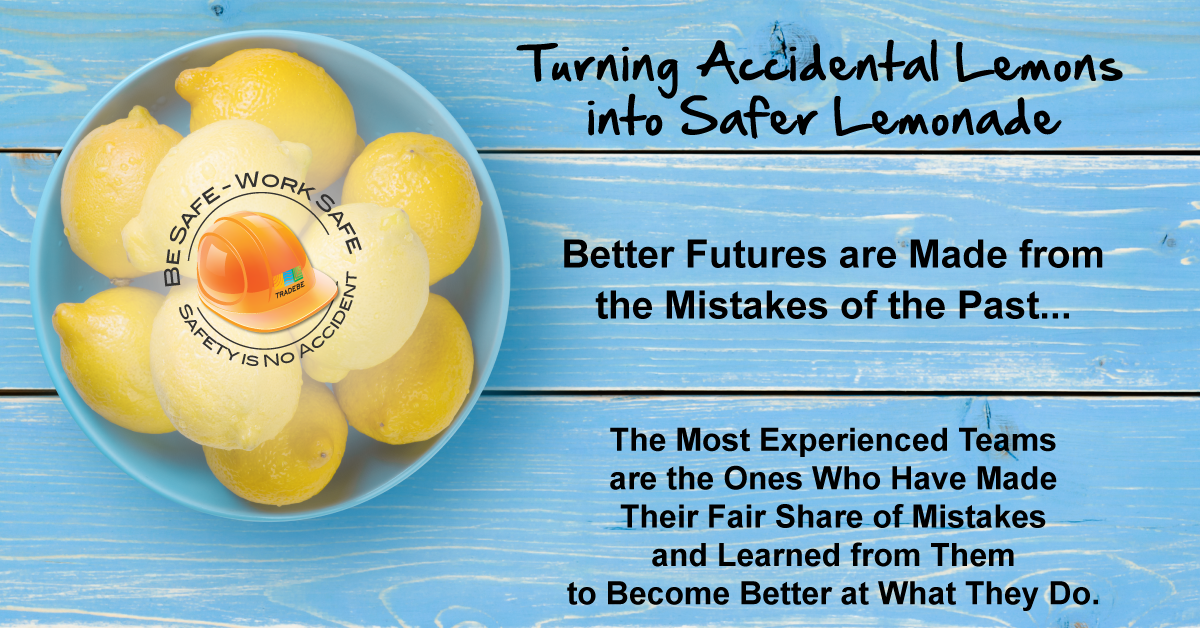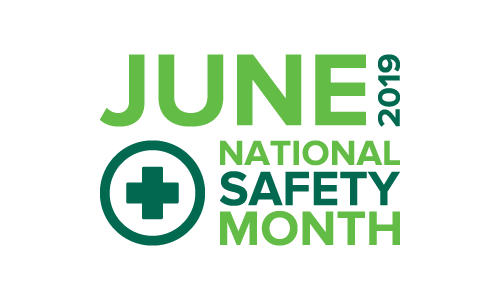
Category
Health & SafetyCreation date
Mistakes Made, Lessons Learned, No Regrets!
When preparing research for a toolbox talk, I came across an article on the topic of “afterthoughts and regrets”. It left me wondering why is hindsight always 20/20?
There is an old saying that goes something like this, “No Experiences are Bad – Some are Good, Others are Lessons.”
How can we learn from the past? What tools can we use so we don’t continue to make the same mistakes? What are the benefits of applying the tools and strategies to our everyday life?
Afterthoughts and Regrets
How often have you said or done something and then later, reflecting on your action, thought to yourself, "How could I have missed that?"
Here are some afterthoughts which, unfortunately, too many of us have experienced:
- "That's how we've always done it before."
- “…before the accident occurred anyway.”
- "I never thought that a little bolt dropped from that distance would cause so much bleeding."
- “I should have worn a hard hat, I guess.”
- "If I had taken that first-aid/CPR course, I probably could have helped him."
- “…and chances are, he would still be here.”
- "I should have taken care of that board with the projecting rusty nails earlier."
- “Now, I must take off work to get a tetanus shot.”
- "Wow, I never realized that a fire could get out of control so fast."
- “If I had called the fire department before trying to put it out myself, I might still have a place to go to work tomorrow.”
- " I know they were always preaching that we should lift with the leg muscles instead of the back muscles."
- “What the heck is a herniated disk?”
- "For few more dollars, I could have bought safety shoes."
- “That deep cut in the toe section ruined my new work boots, and this broken toe still hurts.”
Any of this sound familiar? They say hindsight is the only perfect science-but foresight could have avoided these incidents, misfortunes and regrets.
Turning Accidental Lemons into Safer Lemonade
Hindsight is 20/20 because we realize that with awareness and planning - the incident could have been prevented. These are lessons that are readily available for us to learn from our past mistakes – our incidents are already recorded and documented. Dig them out! Use the negatives to create positives!
Some of these valuable tools can open the door to a safer workplace if used correctly as a reference or resource tool for the future.
These tools include:
- Near Miss Reports,
- Incident Investigations,
- Job Hazard Analysis,
- STARRT Cards
By learning from past mistakes - we can learn to recognize potential hazards and prepare ourselves to provide protection against those hazards in the future.
"Those who don't know history are doomed to repeat it."
- Edmund Burke
Examples of Safety Lessons Learned:
- Safety Depends on What You See
- An employee reported that pallets of empty metal drums were stacked four high and they were leaning and rocking with the wind. If they were to fall someone could be injured or they could damage property. From this we can put a procedure in place that pallets of empty drums can only be stacked two high. We have also learned to keep our eyes open for overhead hazards.
- Property Damage Incident Results in Policy Change
- A company driver backed his trailer into a protruding handrail at a customer site causing damage to his trailer and the customer’s property. From the investigation we learned that there was an additional team member in the vehicle when the incident occurred. From the incident investigation put a policy in place so that a spotter is used when backing a vehicle.
- Being Prepared for the Potential Hazards of a Job
- Upon completing a JHA, or Job Hazard Analysis, we identify that there is a high potential for exposure to acids in the area where we will be working. We reviewed the SDS, Safety Data Sheet, and determined the types of protection or PPE that was required to keep everyone safe on the job.
- Being Aware of Your Surroundings and Environment
- While preparing a STARRT Card, or Safety Task and Risk Reduction Talk, we realized that there is more heavy equipment traffic in the area than originally planned for. We established job site rules including work zone spotters, hi-visibility PPE, barriers and blockade devices, etc. to keep our team safe.
Safety State of Mind
We can use our tools and training to prevent potentially hazardous environments from leading to incidents or accidents on our jobsites. This is where foresight far outweighs hindsight in value. The great news is that Safe employees tend to become more cautious not only at work but at home and in their personal lives too.
Also, as employees become safer, they tend to look out for each other more. Safety Culture is made of this! When employees – everyone on the team is Safety minded at all levels of the company – Safety Improves in general.
This can lead to reduced injuries, expenditures, and lost time. A culmination of these items can lead to a decreased EMR and TRIR, which can help a company continue to grow by opening more doors and earning the trust of not only their internal teams but also their client base.
The Invisible Line Between Safety and Production
I will admit that there has always been a struggle between safety and production, but there is a place somewhere in the middle where both ideologies can thrive while maintaining a safe environment. It is a very important balancing act for any business.
The great news, at least for us here at Tradebe, is that we have seen a shift in our culture. There are actual scenarios where some of our most seasoned production personnel with decades of experience may have previously said, “Just get it done.”
Today, the tide has changed though from years ago. Those seasoned production folks now have their safety hats on too and pause work to evaluate safety whenever needed. In some cases, I have witnessed situations where these teams have determined there were changes needed that would create a safer workplan - then that improved plan resulted in even more efficiency – all from taking that pause to evaluate Safety.
When given a chance to pause and collaborate, production and safety teams can excel together.
At Tradebe, our team works hard every day to try to make this a natural part of our Safety Culture. We all want the job done, but together as a team we ensure it is done both safely and efficiently.
Need help with your Safety and Compliance Training Programs?

Contact us now and let us put our expertise to work for you!
“Be Safe - Work Safe. Safety is No Accident!”
Steve Fiala
EHS Manager, Tradebe USA
______________________________
#SafetyBlog #HealthandSafety #MistakesMadeLessonsLearned #SafetyCulture #ToolboxTalks #BeSafeWorkSafe #SafetyisNoAccident
Resources:
Related articles and information:
- Tradebe blog article "Driven by Safety
- Tradebe blog article "Creative Tools for Training Retention"
- Tradebe blog article "Understanding Proper PPE"
Subscribe to Tradebe Safety Blog, news and more...
__________________________________________
At Tradebe, our priorities are safety and the protection of people and the environment. Safety is a common “water cooler” topic here at Tradebe where a culture of Safety is Top Priority. If Safety is important to your business, catch the latest buzz: Subscribe Now…


